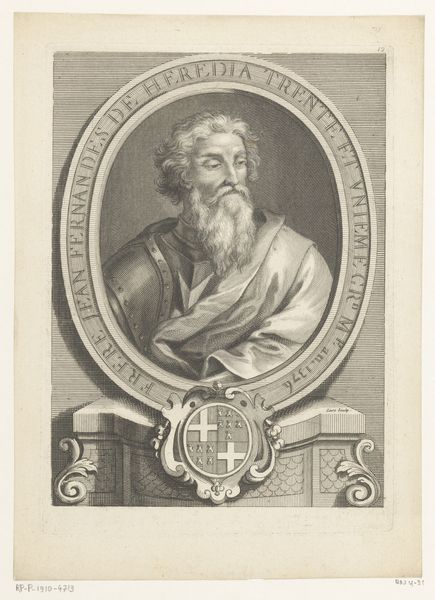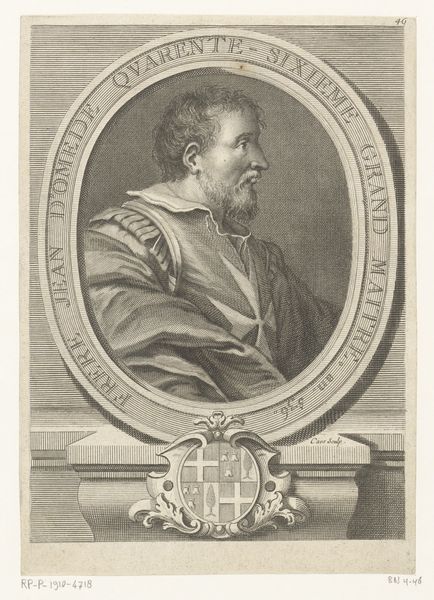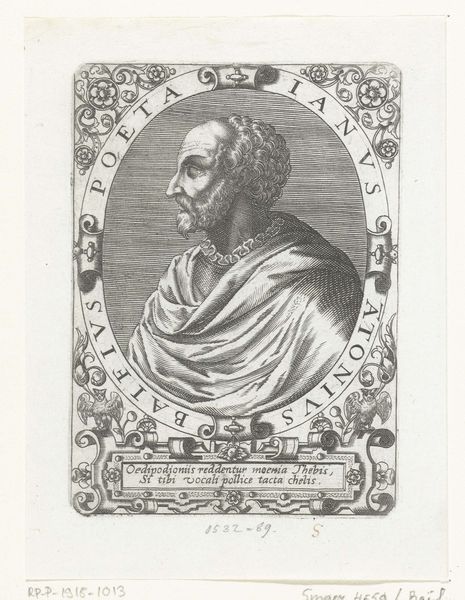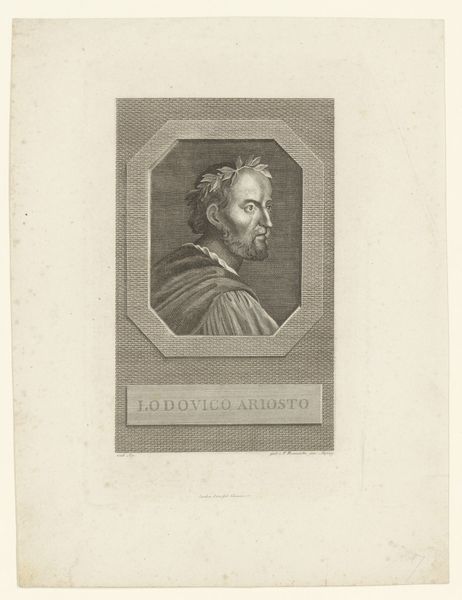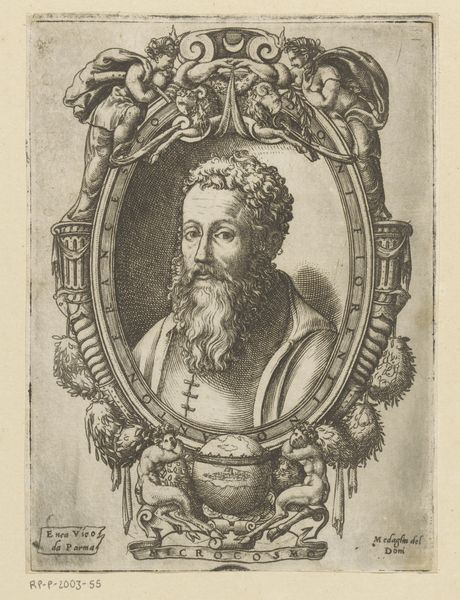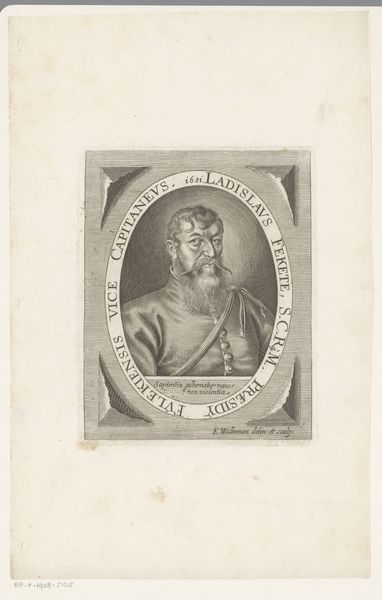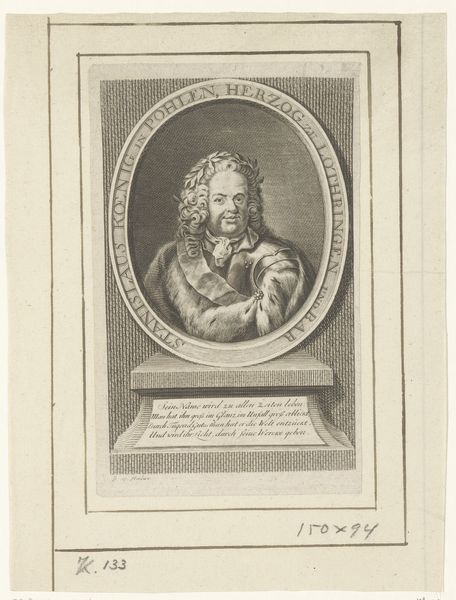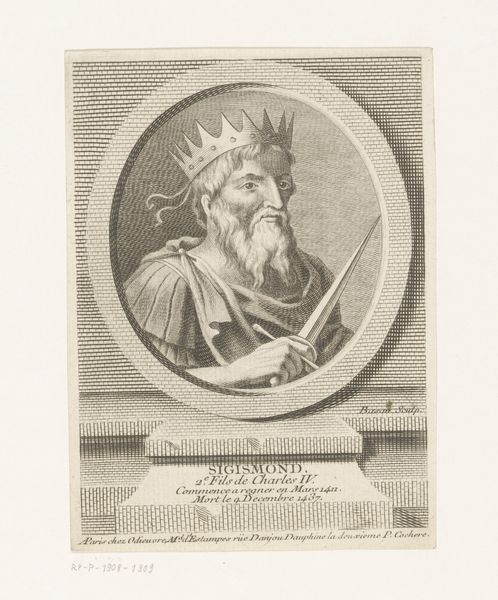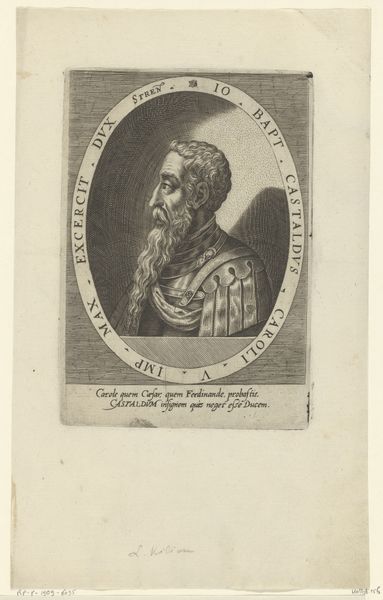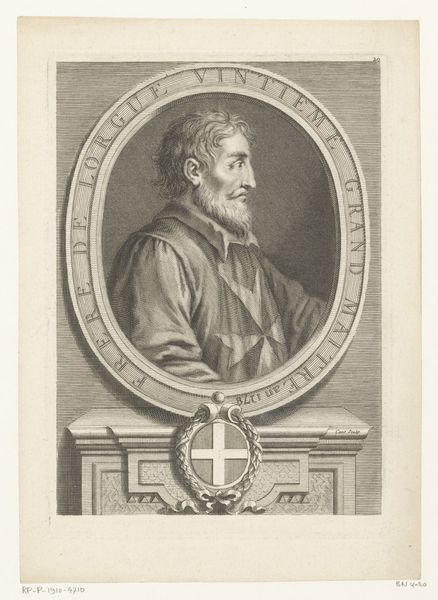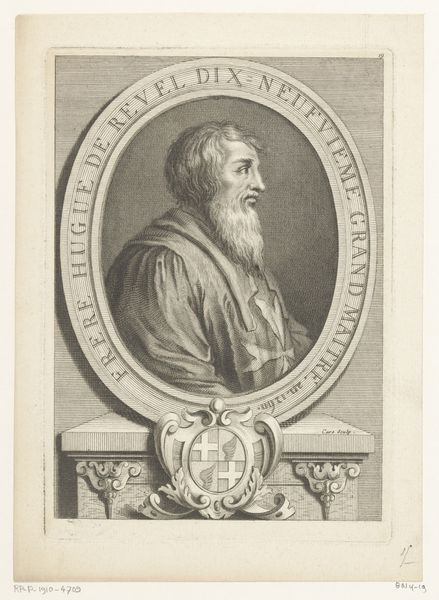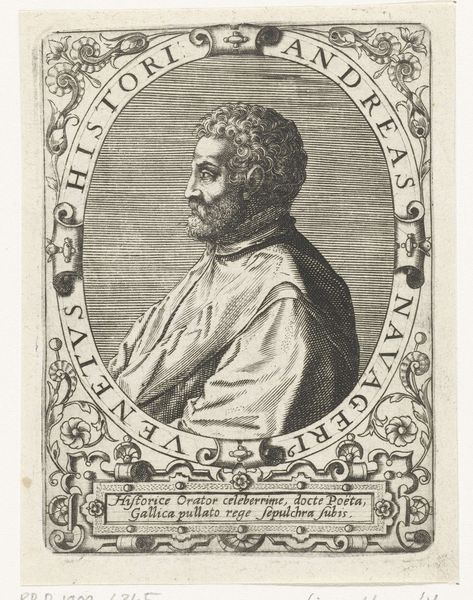
print, engraving
#
portrait
#
baroque
# print
#
old engraving style
#
19th century
#
history-painting
#
engraving
Dimensions: height 150 mm, width 110 mm
Copyright: Rijks Museum: Open Domain
Here we see Michel Aubert’s portrait of Emperor Otto I, engraved around the 18th century, now held in the Rijksmuseum. Note the laurel wreath crowning Otto's head, a motif deeply rooted in antiquity. As a symbol, it signified triumph, honor, and imperial power, tracing back to the ancient Greeks and Romans. But observe its evolution: in ancient Greece, laurel wreaths adorned victors in athletic contests, a symbol adopted by Roman emperors to signify military success and divine favor. Interestingly, this motif did not disappear with the fall of Rome. It re-emerged throughout the Renaissance and Enlightenment, including in this engraving, to evoke a sense of classical glory and legitimate imperial rule, illustrating how the visual language of power transcends time. This isn't merely aesthetic; it taps into a collective memory, evoking subconscious associations with power, legitimacy, and the cyclical nature of history. The laurel wreath, therefore, is not static. It's a dynamic symbol, shaped by the evolving psychological and cultural landscape.
Comments
No comments
Be the first to comment and join the conversation on the ultimate creative platform.
